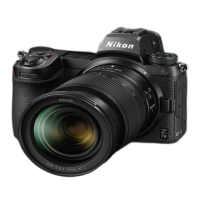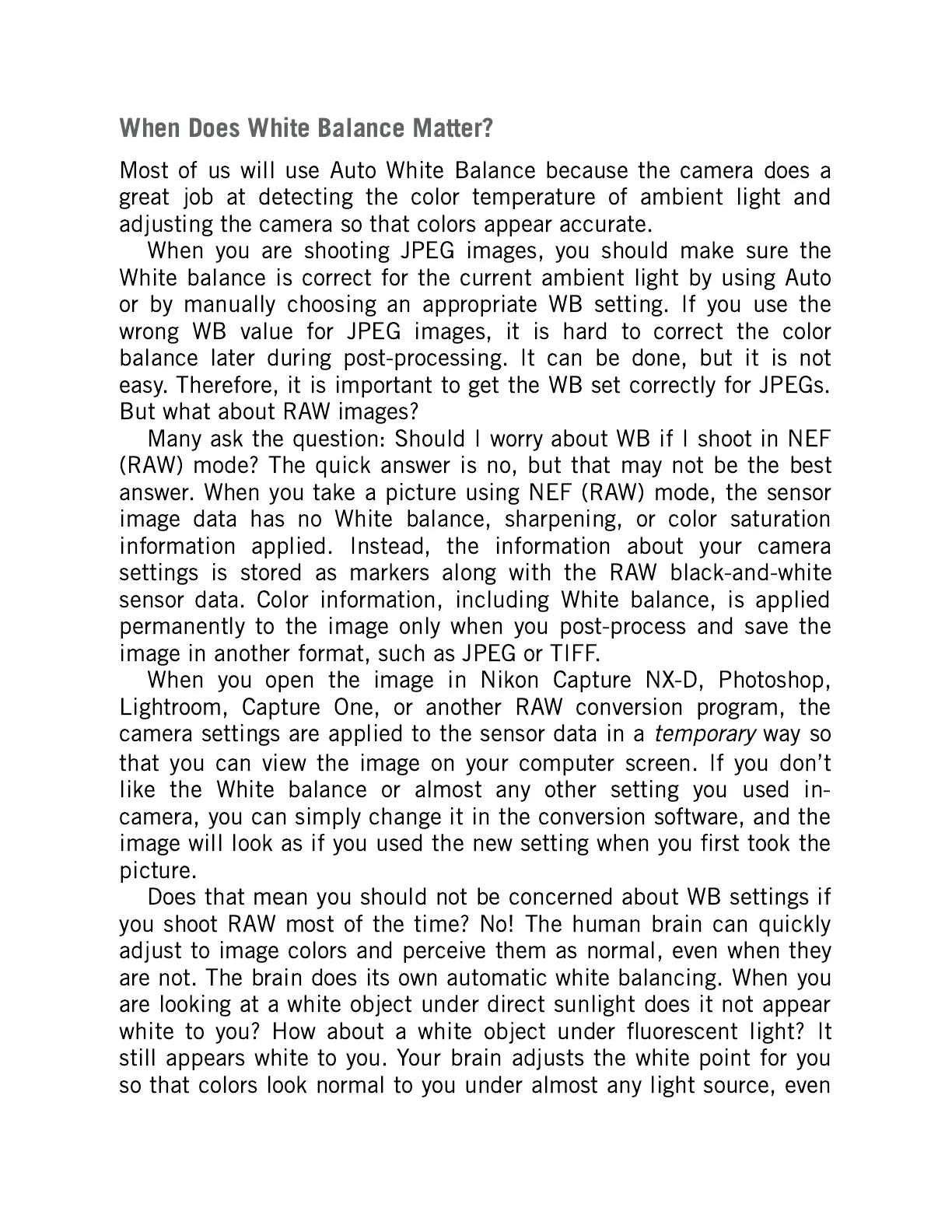When Does White Balance Matter?
Most of us will use Auto White Balance because the camera does a
great job at detecting the color temperature of ambient light and
adjusting the camera so that colors appear accurate.
When you are shooting JPEG images, you should make sure the
White balance is correct for the current ambient light by using Auto
or by manually choosing an appropriate WB setting. If you use the
wrong WB value for JPEG images, it is hard to correct the color
balance later during post-processing. It can be done, but it is not
easy. Therefore, it is important to get the WB set correctly for JPEGs.
But what about RAW images?
Many ask the question: Should I worry about WB if I shoot in NEF
(RAW) mode? The quick answer is no, but that may not be the best
answer. When you take a picture using NEF (RAW) mode, the sensor
image data has no White balance, sharpening, or color saturation
information applied. Instead, the information about your camera
settings is stored as markers along with the RAW black-and-white
sensor data. Color information, including White balance, is applied
permanently to the image only when you post-process and save the
image in another format, such as JPEG or TIFF.
When you open the image in Nikon Capture NX-D, Photoshop,
Lightroom, Capture One, or another RAW conversion program, the
camera settings are applied to the sensor data in a
temporary
way so
that you can view the image on your computer screen. If you don’t
like the White balance or almost any other setting you used in-
camera, you can simply change it in the conversion software, and the
image will look as if you used the new setting when you first took the
picture.
Does that mean you should not be concerned about WB settings if
you shoot RAW most of the time? No! The human brain can quickly
adjust to image colors and perceive them as normal, even when they
are not. The brain does its own automatic white balancing. When you
are looking at a white object under direct sunlight does it not appear
white to you? How about a white object under fluorescent light? It
still appears white to you. Your brain adjusts the white point for you
so that colors look normal to you under almost any light source, even

